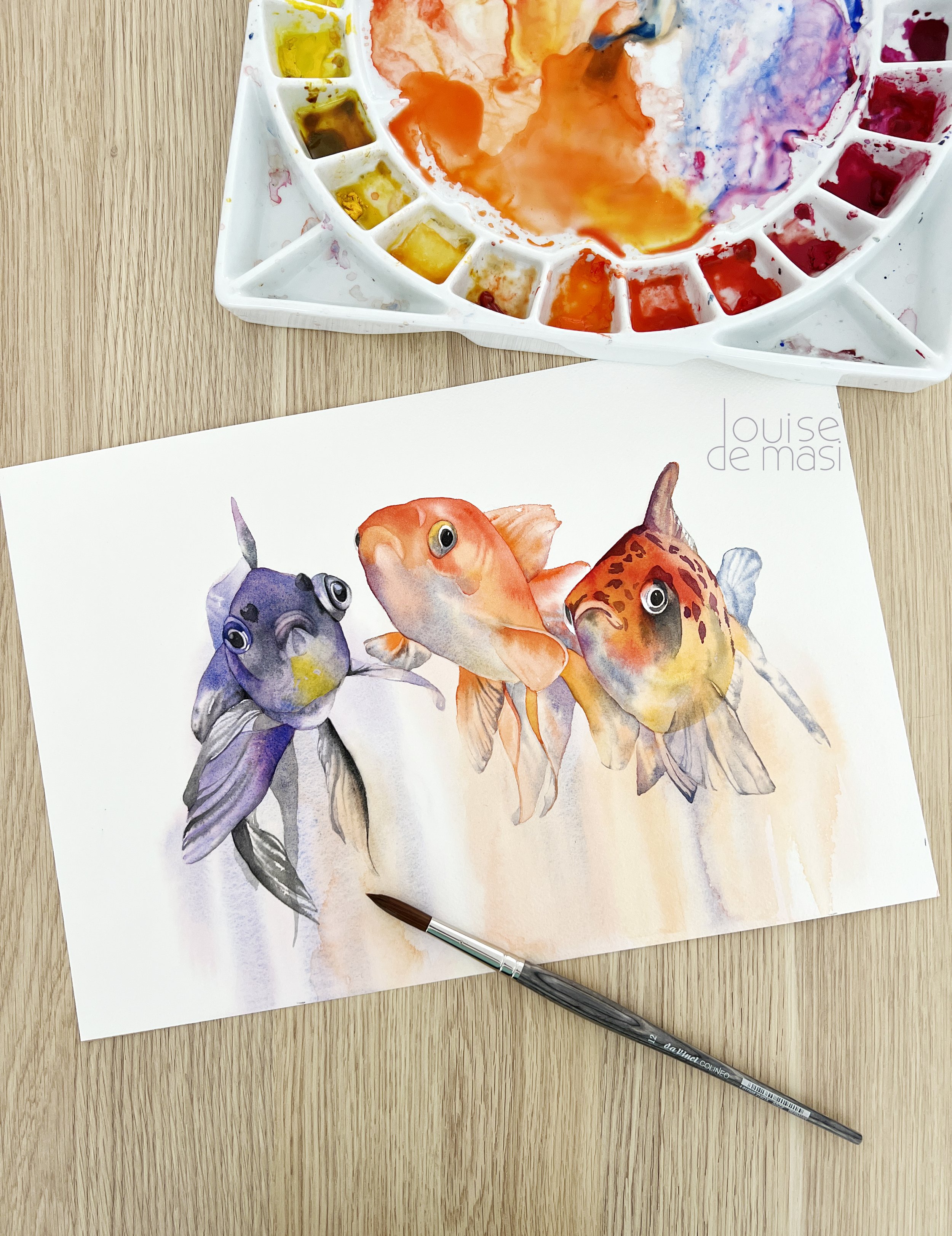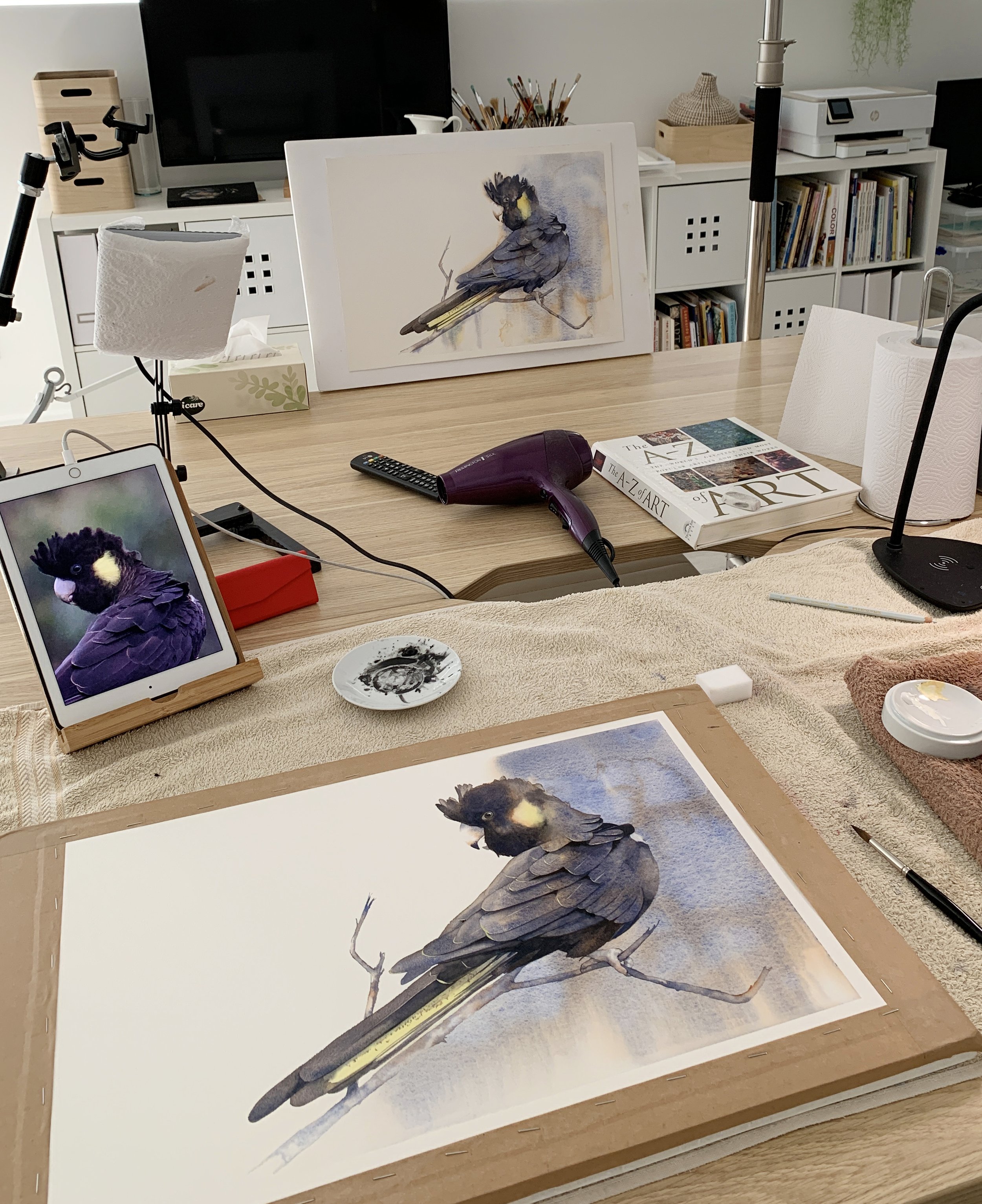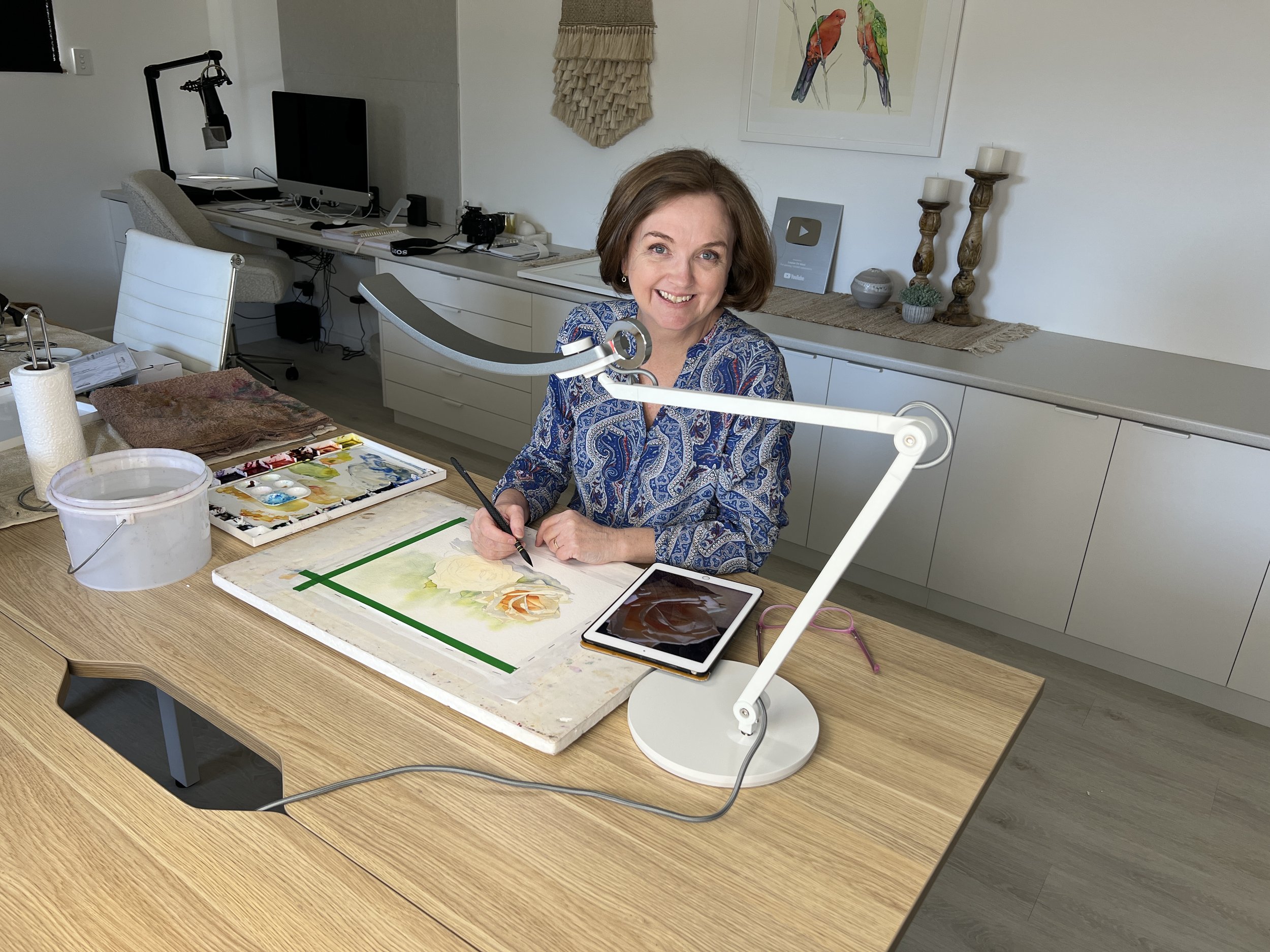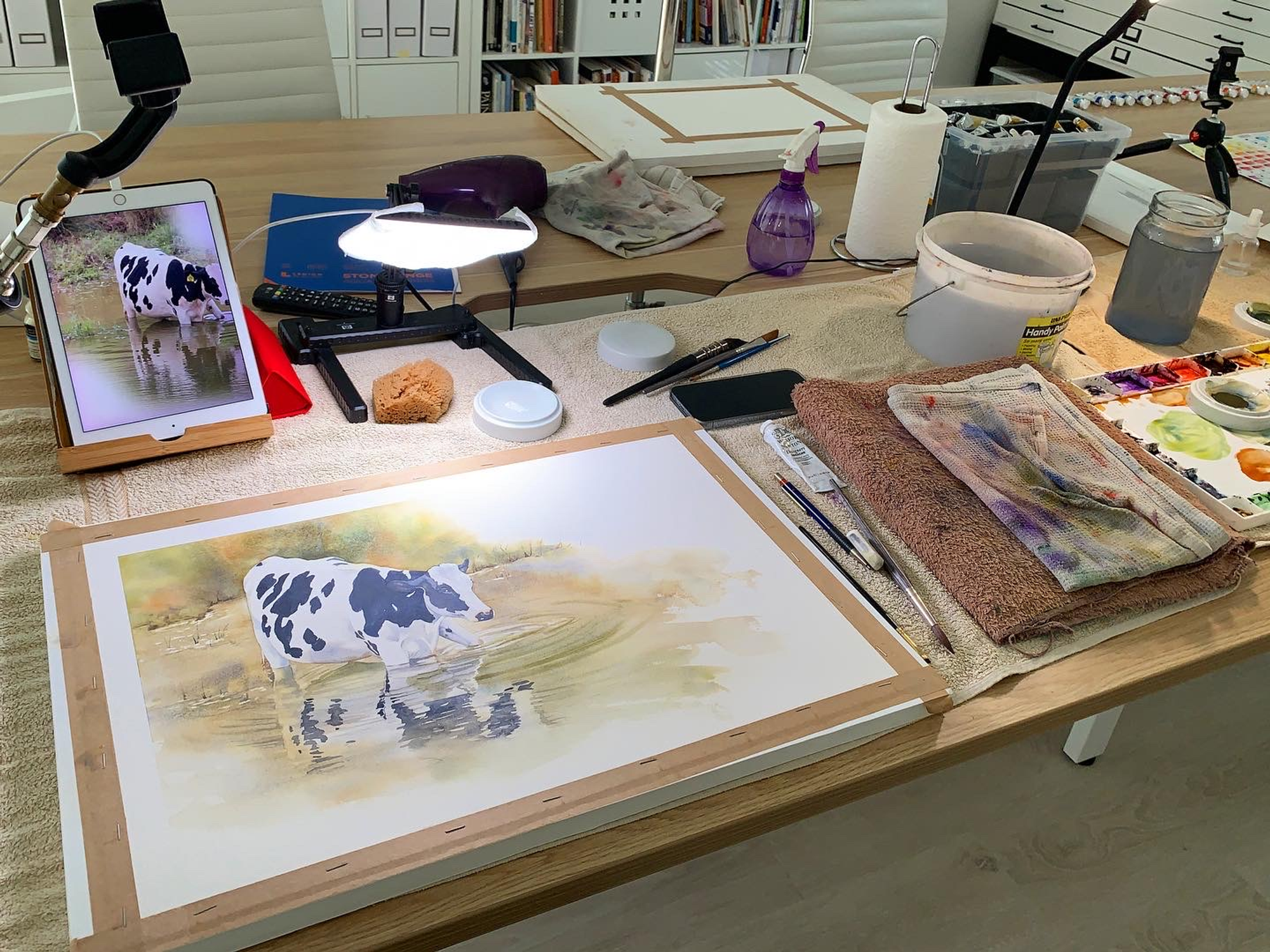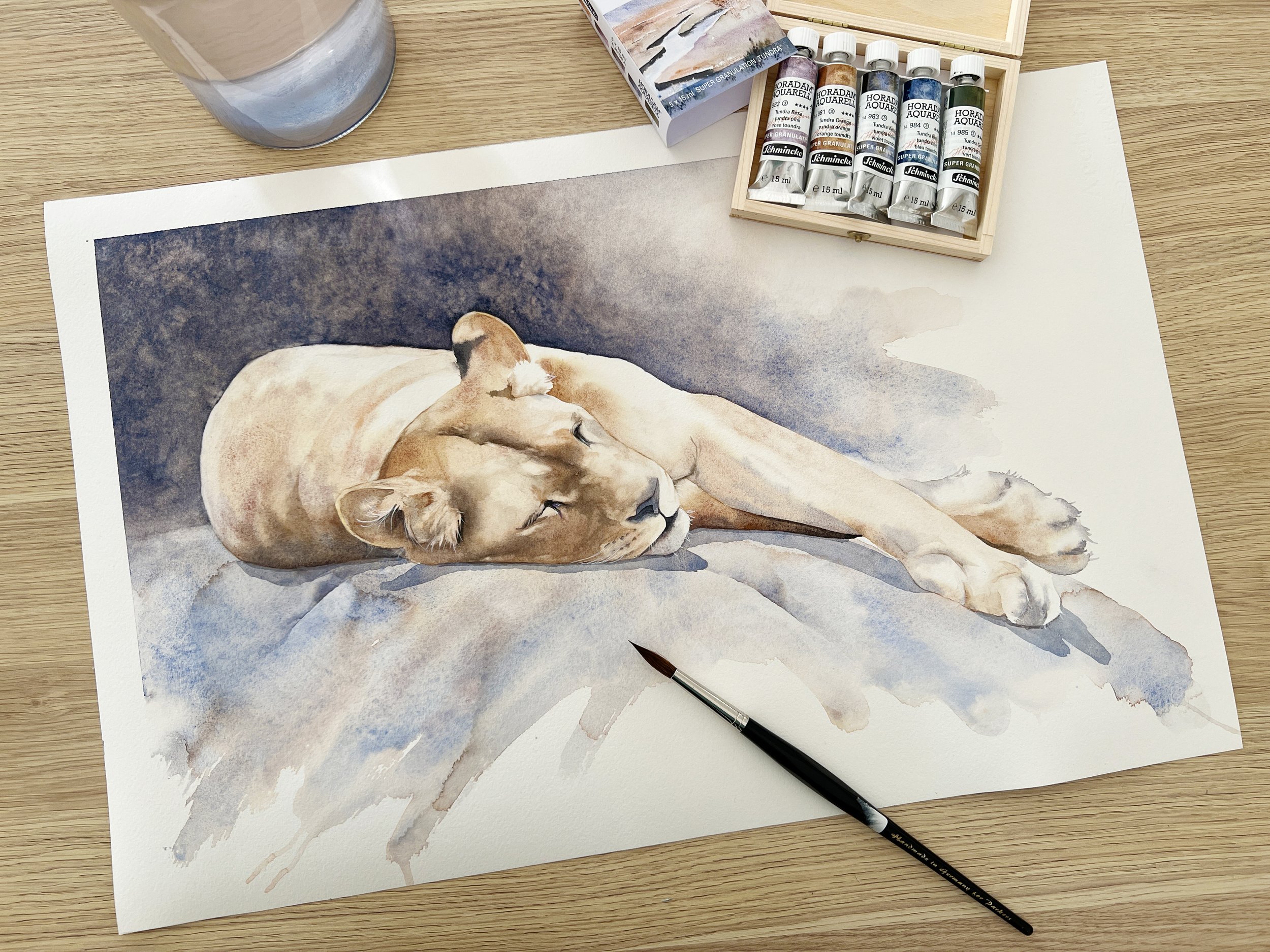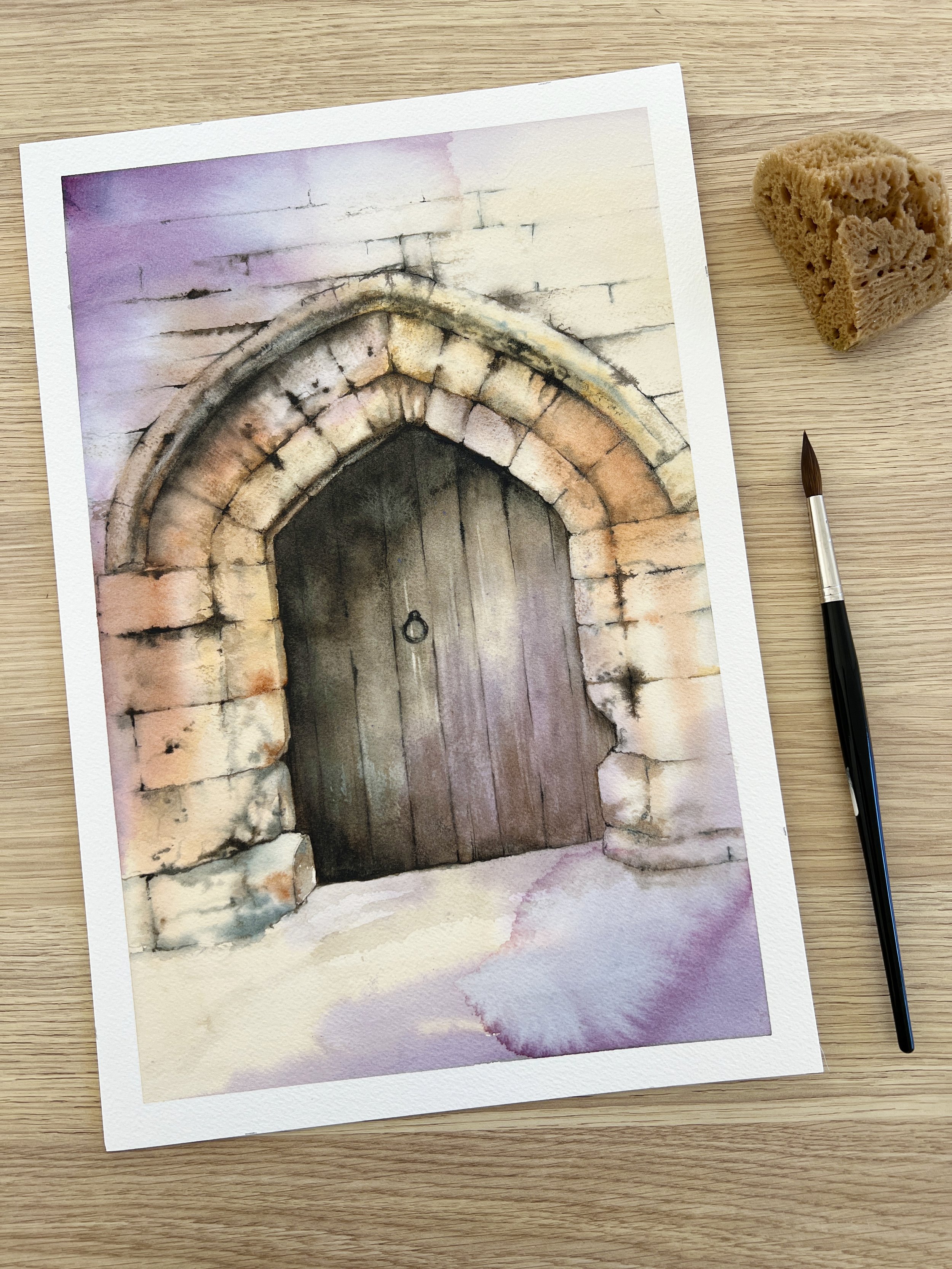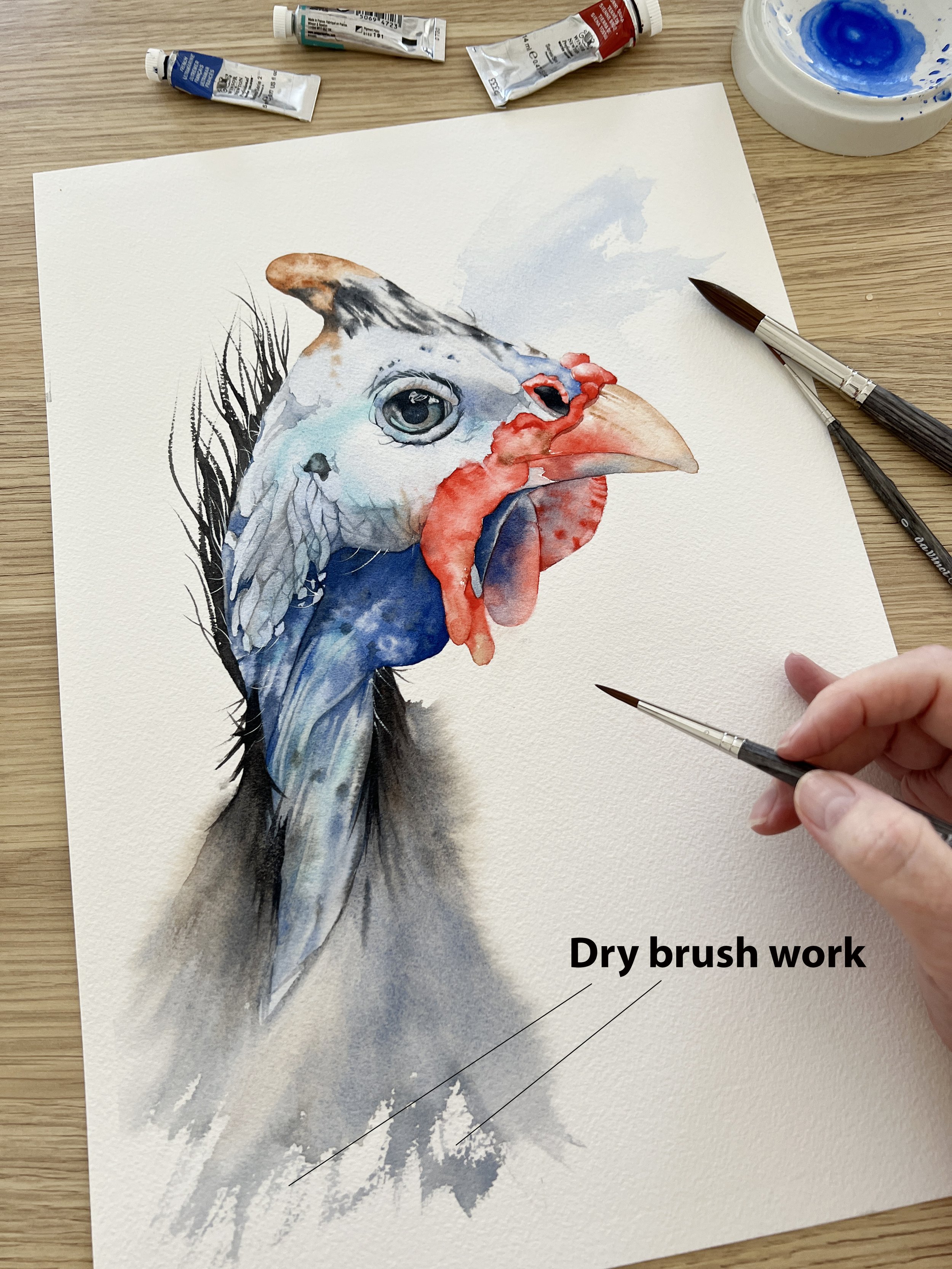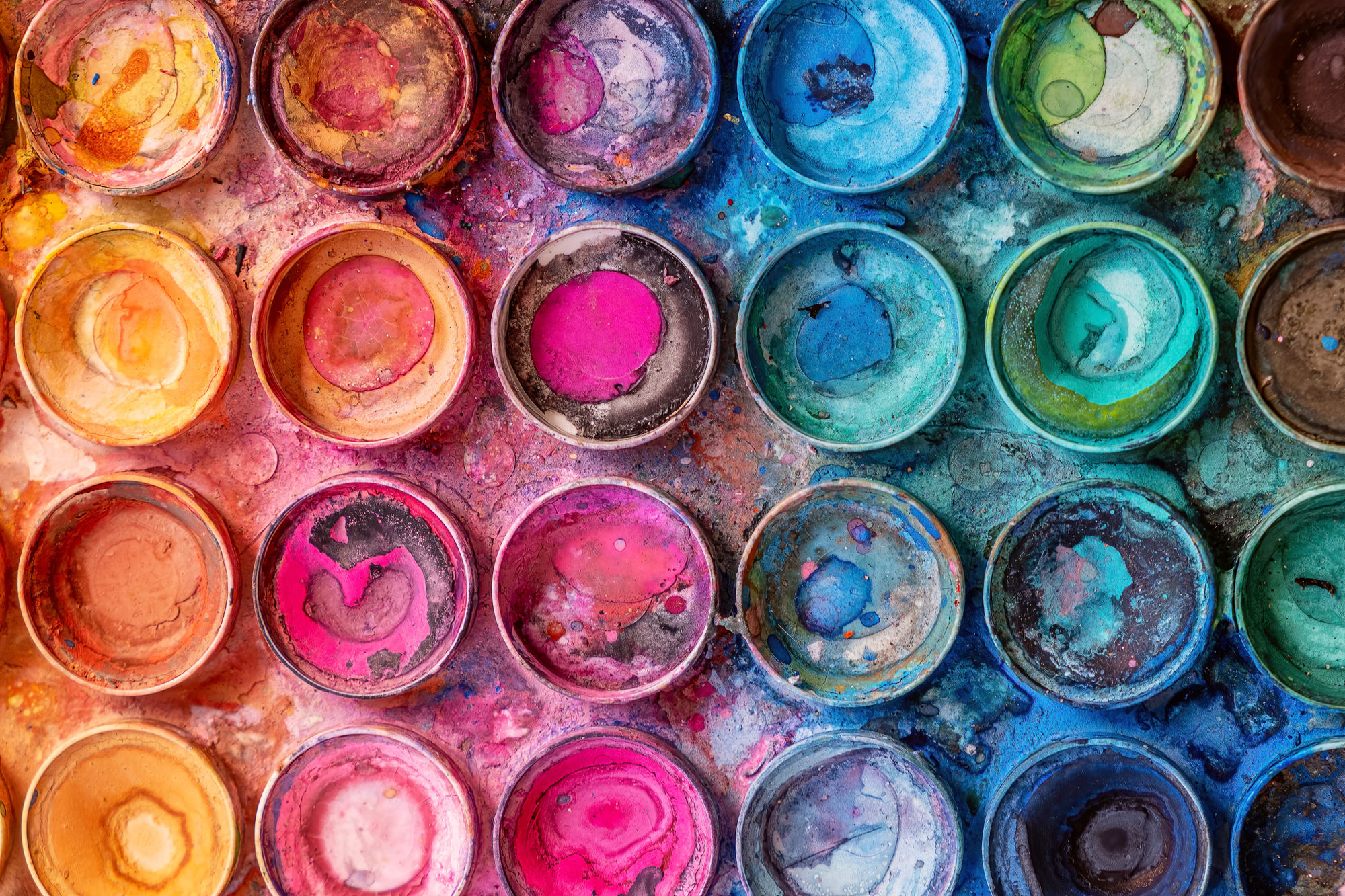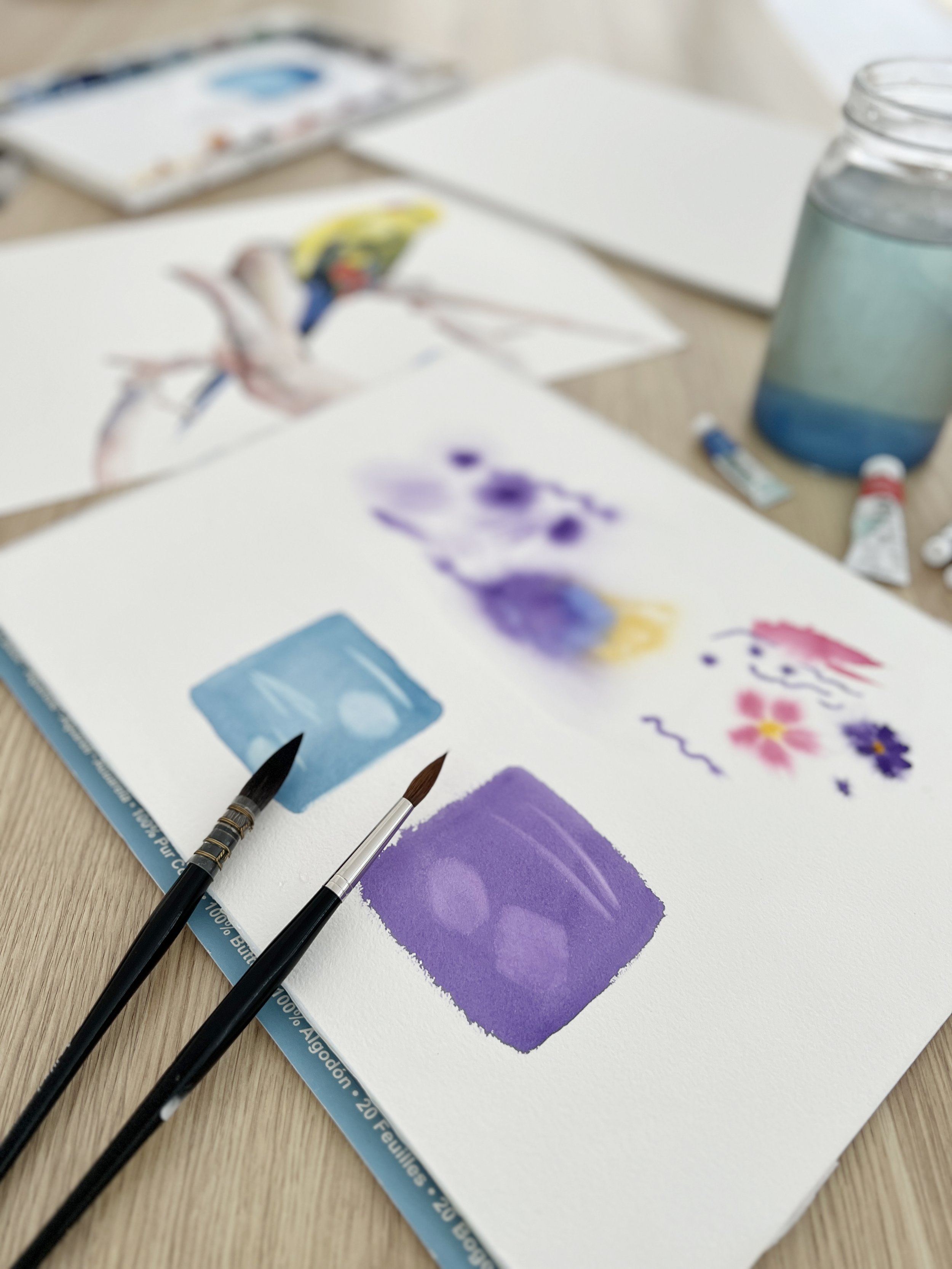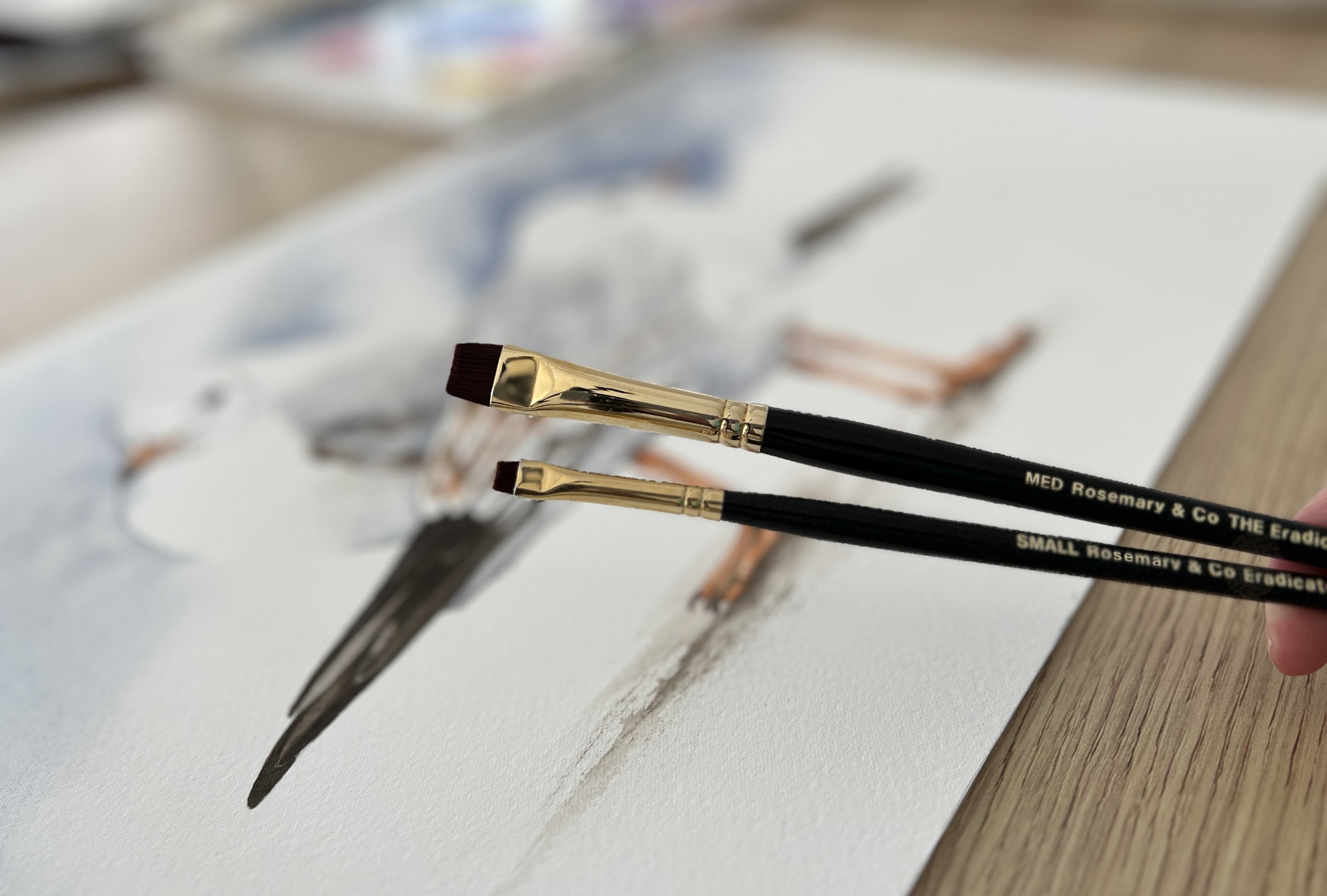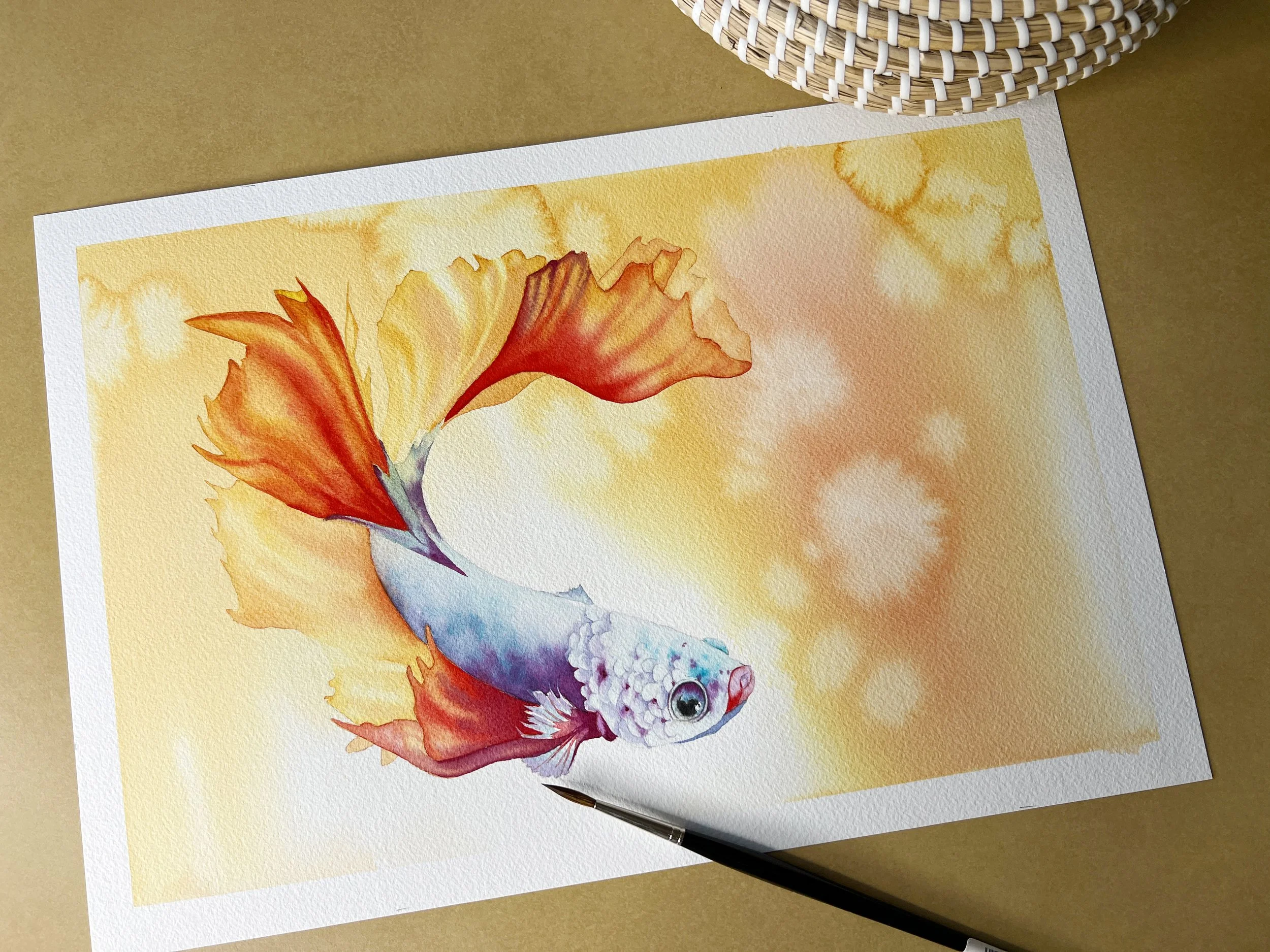Your personal art style refers to the unique and distinctive way in which you express yourself through your work. It is your artistic voice. It is the result of your personal preferences, experiences, influences, and creative decisions. A personal art style encompasses your individual techniques, subject matter choices, colour palette, compositional preferences, and overall visual language. It is unique to you and it's a reflection of your personality and creative identity.
Read MoreSometimes blooms can be a problem on a painting. For example, if you were painting a clear sky you don't want a bloom to appear on the drying wash. As the drying process advances, you'll notice the paper reaches a certain point where it is no longer entirely wet but not entirely dry either. This 'drying point' is crucial in avoiding blooms. When you reach this stage, resist the urge to continue working in the same area. Instead, shift your focus to other parts of the painting that require attention. Working elsewhere during this stage helps prevent accidental blooms.
Read MoreWhen working wet on wet, the fluidity of watercolour paint is one of its characteristics that makes it so appealing to use. Some artists say that a watercolour painting often paints itself. This is because of the spontaneous and unpredictable nature of working with watercolor. It captures the idea that watercolor, due to its unique properties, can sometimes lead to unexpected and beautiful results that may seem to emerge organically, almost as if guided by the medium itself.
Read MoreIf you are like me, you probably frequently struggle with perfecting your technique, and there are times when your paintings may fall short of your expectations. Instead of throwing in the towel, persevere and strive for improvement. Don't give up easily and continue to push through your problems.
Read MorePainting in watercolour is magical! I became captivated by it in 2011, and my excitement for it has not waned since then.
With its delicate washes, amazing luminosity, and unpredictable nature, once watercolour has you in its spell there is no turning back. Every brush stroke becomes an adventure as you watch the wet paint dance over the paper. There is no other medium like it.
Read MoreWhen you mix colours it’s a good idea to start with the lighter colour or the colour that has the lighter value.
For example, if you want to mix green, it’s best to start with yellow and mix blue into it gradually until you reach your desired colour, rather than the other way around where you start with blue and mix yellow into it. Blue has a darker value than yellow- it is more dominant than yellow.
Doing it this way will reduce paint wastage.
Read MoreGlazing is useful for creating depth, luminosity, and richness in a watercolor painting. By gradually layering colours, you can create subtle shifts in colour and tone, enhancing the overall vibrancy and complexity of your artwork.
You can also use watercolor glazing to increase color harmony through your painting.
Read MoreIt's called negative painting because it refers to the technique of painting or utilising the area of negative space around a subject. You are effectively, painting the negative spaces in order to leave the positive shapes.
Negative spaces on a painting are those empty areas that surround your subject. The positive spaces or positive shapes, are the subject itself.
Read MoreThe easiest way to tell whether a watercolour pigment is granulating is to look at a colour chart of the paints you use. The paint manufacturers indicate on their charts whether a pigment is granulating or not. You can buy the charts or you can go online and download them from the paint manufacturer's website.
Read MoreVisual texture in a watercolour painting refers to the illusion of different surface qualities that are created through the use of various brushstrokes, colours, and techniques. It adds depth, dimension, and interest to the artwork. Artists can use textured areas to create focal points and draw the eye to specific areas of the painting. Texture can be used to convey emotions and enhance the expressive qualities of a watercolour painting.
Read MoreThe key message I took away after reading Atomic Habits by James Clear is that by harnessing the power of tiny habits, we can transform our lives and achieve extraordinary results. If we implement small, consistent changes in our habits and focus on the process rather than the outcome, we can make remarkable progress and achieve long-term success.
Read MoreCharging can be used to create interesting textures and visual effects in watercolour paintings. By manipulating the wet paint or water, you can create patterns, ripples, and organic shapes, adding depth and visual interest to your artwork.
When I paint initial washes on a subject I like to add interest by dropping in another unexpected colour as I did here on this Rooster painting.
Read MoreThe dry brush technique is an expressive way to paint. So when you use it, you need to let go of your inhibitions and relax…..just breathe. It produces a random effect that you can’t really control.
It's not an easy technique to do, and it requires practice.
Read MoreWhen we refer to muddy colours or creating mud on our watercolour paintings we mean we have lost the vibrancy that watercolour paintings are renowned for. The colours on your painting might appear dull, lifeless or lacking in vibrancy. They just look …….meh.
Read MoreIt is possible to use gouache and watercolour together in a painting, but it is recommended to apply gouache towards the end of the painting process due to its reactivity with water. Also, as I mentioned, gouache is an opaque medium that can cover watercolour, whereas watercolour is transparent and cannot cover gouache.
Read MoreI find painting on watercolour blocks to be a frustrating process. Despite my best efforts, I often end up with puckered paper and the resulting hills and valleys make for an unpleasant painting experience. I paint with a lot of water though, so maybe if you paint with a drier painting process you might find them suitable to paint on.
Read MoreThis brush is perfect for creating highlights on a watercolour painting after the paint has dried.
It’s a flat, stubby brush with stiff bristles. It’s stiff enough to remove the dry paint but soft enough to not damage the paper.
Read MoreNot only is watercolour painting inherently transportable, but it allows for an easy clean up once you’re done with your artwork. All you have to do is wash off any excess paint from your brushes. They don’t need to be cleaned thoroughly after each painting session.
Read More